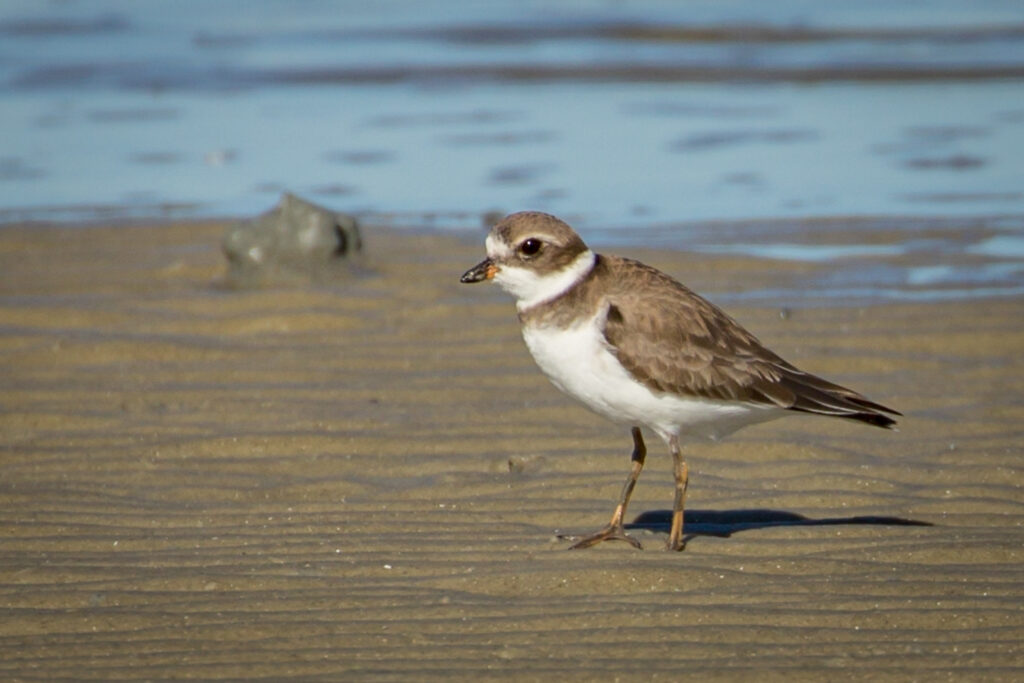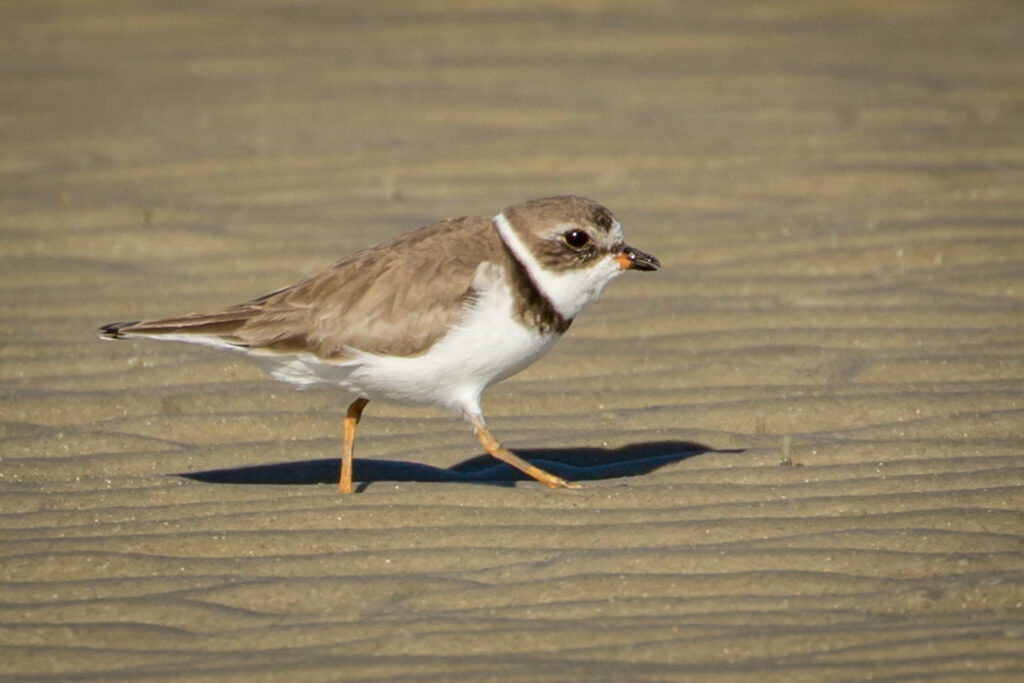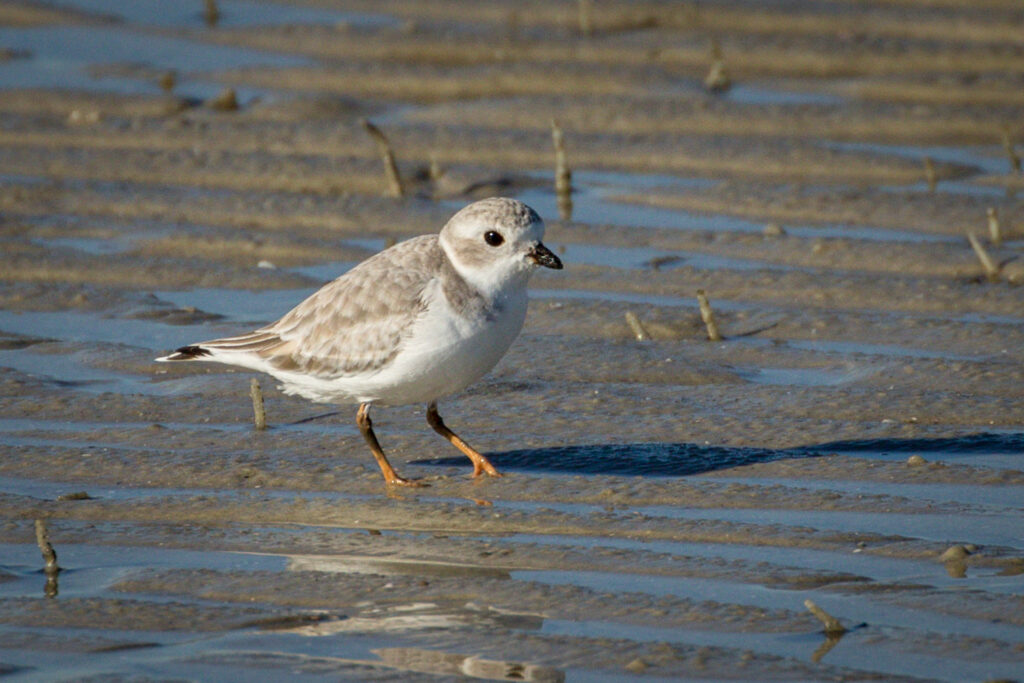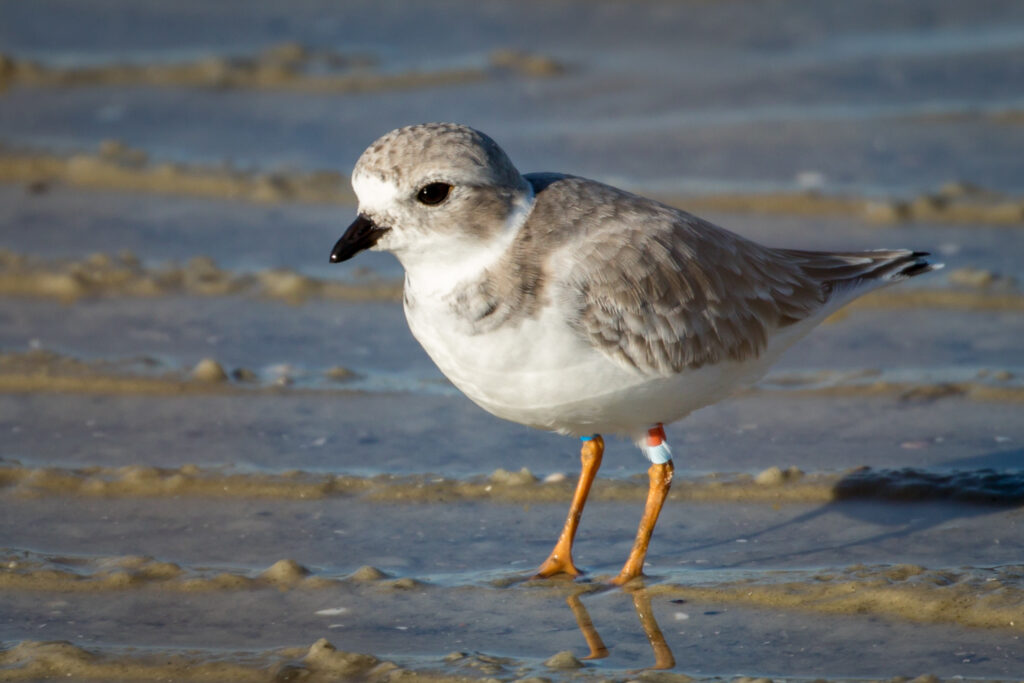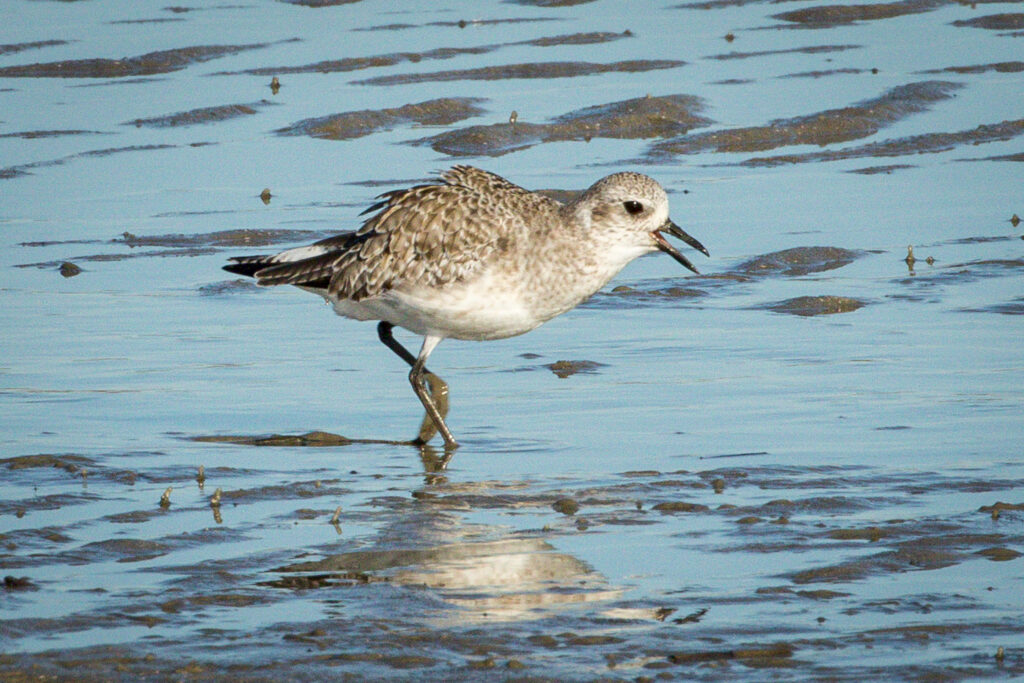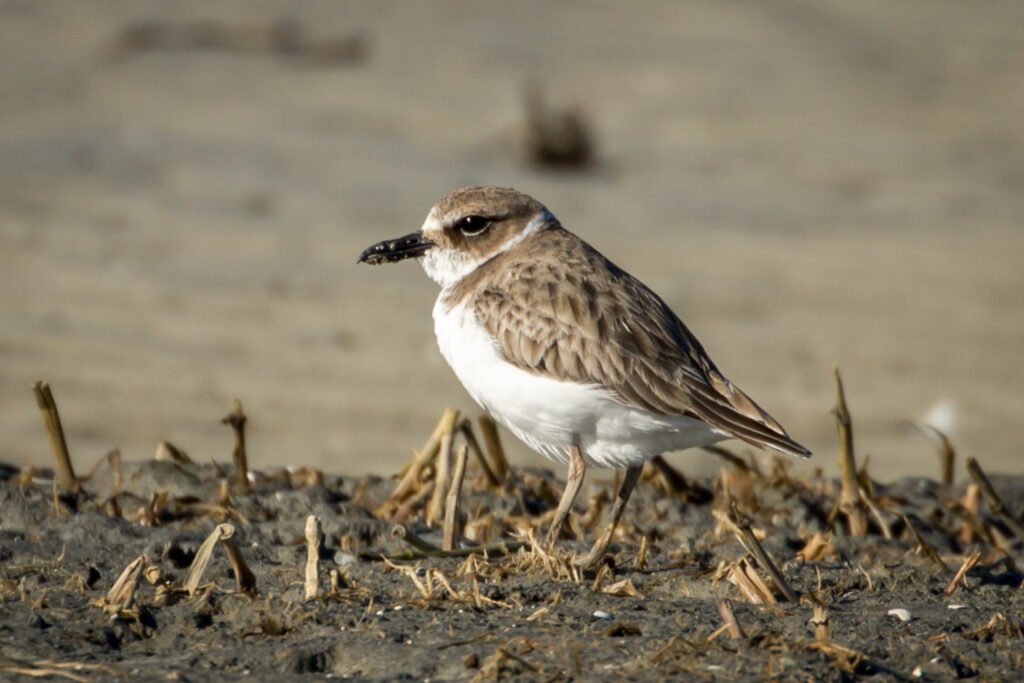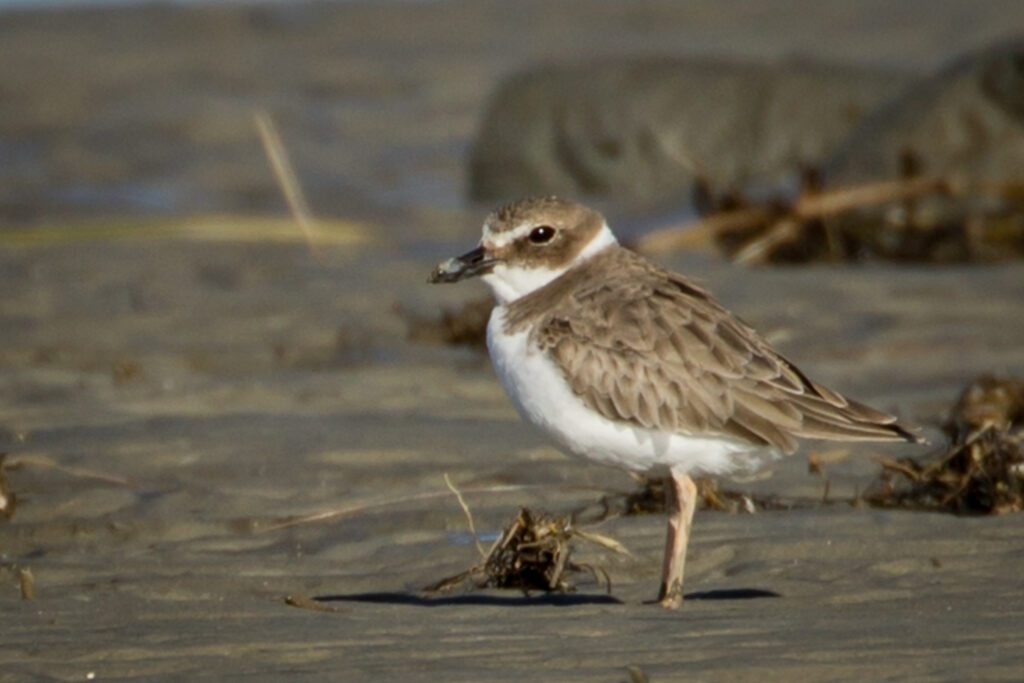Plenty of Plovers
I recently went to visit my father (91 years old!) on Hilton Head Island. We have been birding there in the past and this trip was no exception. One of our favorite places to bird is Fish Haul Beach, which is on the north-east side of Hilton Head. Fish Haul Beach has a gently sloping beach which extends out into the Port Royal Sound – across the sound lies St. Helena Island and if you look to the right you can see the Atlantic Ocean. Because the beach doesn’t drop off sharply low tide exposes about 60 yards of beach. We prefer getting there after low tide because the incoming tide “pushes” the birds closer to the shoreline and the exposed sand at low tide can be quite mucky (I sunk up to my ankles once, necessitating a thorough cleaning of my shoes).
A wide variety of shorebirds are regularly found on the beach and today I want to share some pictures of the different types of plovers found there. The most common plover in the midwest is the Killdeer, of which we saw one or two during our stay on Hilton Head. Far more numerous were the Semipalmated Plover, Piping Plover, and Black-bellied Plover. One rare plover was reported there and it took us three tries to find it.
We start off with the the Semi-palmated Plover. This small shorebird is often found along the shoreline throughout the United States during migration. They spend the summer in Upper Canada/Alaska then pass through the 48 contiguous states on their way to the Atlantic and Pacific shores for the winter. They can be mistaken for a Killdeer unless you look closely and note they have one breastband (Killdeer have two).
If you recall, we have a famous mating pair of Piping Plovers in Chicago – Monty and Rose. They’ve met on Montrose Beach for the past three years and their arrival each spring has been front-page news. I was surprised to find quite a few Piping Plovers on Fish Haul Beach; we counted eight of them during one of our visits there. Part of the reason Chicago has fallen in love with Monty and Rose is that they are just so cute! Here are a couple of shots of Piping Plovers on the beach – notice the bands on the bird in the second picture (more on that later).
A third plover we found regularly (they were more numerous than the other plovers) was a Black-bellied Plover. These look a bit different than the previous two (being much bigger and longer) because they belong to a different Genus (Pluvialis). They breed as far north as you can get so we don’t get to see them in their breeding plumage very often. Their non-breeding plumage is much more bland which helps them blend in with the sandy beaches where they winter.
When we first arrived on Hilton Head Island we poured over the recent eBird checklists for what had recently been reported and even signed up for the Rare Bird Alerts for Beaufort County. One bird that regularly showed up on the Fish Haul Beach Alert was a Wilson’s Plover. We had never heard of these before so we studied up on what they looked like and kept an eye out for them. No luck the first trip. The second trip we chanced upon another birder (there weren’t many out, to our surprise) who said she had recently seen them down on the opposite side of the beach we were searching. On the day we left Hilton Head we had some time before heading to the airport so once again we went over to Fish Haul Beach in search of Wilson’s Plover. This time we knew where to look and sure enough we found a couple of them! Take a look at the size of the beak on this bird! At first place it might remind you of a Semipalmated Plover but once you look at the beak you know it’s a Wilson’s. A Lifer!
More interesting birds were found on Hilton Head Island and I’ll share more pics soon.
Stay Safe. Go Birding. Take Pics. Share Here. Repeat.
Mike
If you would like to learn more about GreatBirdPics.com Click Here. Members can post their own Great Bird Pics, create an online gallery of their works, and receive regular emails about bird photography.
